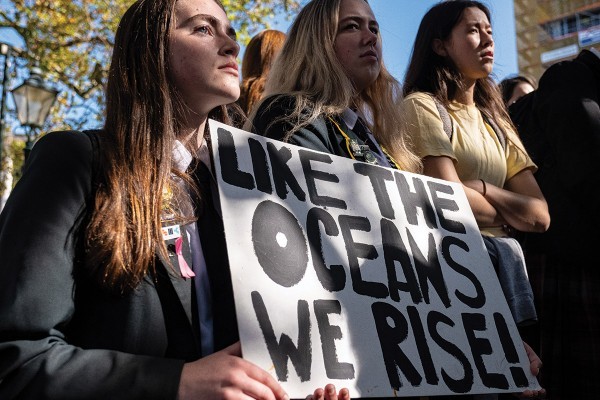Almost a year and a half after their last swathe of nationwide protests, the “School Strike 4 Climate” (SS4C) is planning to return to Aotearoa on September 23. Organisers hope that this will be “the biggest climate strike mobilisation in Aotearoa to this day”.
On August 17, School Strike 4 Climate Ōtautahi (Christchurch) issued a press release calling for students nationwide to join their latest “intergenerational climate strike”. Slated to be the first nationwide climate strike since the SS4C protests in April 2021, the protest is scheduled to go ahead on Friday September 23. This is designed to dovetail with a global day of strike action by Fridays For Future, the global environmental activist movement spearheaded by Swedish activist Greta Thunberg.
The scheduled date would put it in the middle of the voting period for local body elections (16 September to 8 October). According to Aurora-Garner Randolph, of SS4C Ōtautahi, this timing was very much intentional: “I am striking because I am sick of councillors and the council talking big about all of the climate action that they believe in, but not implementing any legislation that will improve sustainability in our city, or benefit those most affected by climate change.”
Unlike the previous SS4C protests, which were coordinated across the motu (country), this round of protests are most likely going to be organised separately, by independent local groups. Despite this, the Ōtautahi-based organisers are hopeful for a nationwide response. “With students now putting the call out to adults too, it is highly likely that [this year] will see the biggest climate strike mobilisation in Aotearoa to this day”. An estimated 170,000 joined the SS4C protests in September 2019 (3.5% of the population), which made it the largest in the world by per-capita turnout. It was estimated that 38,000 protesters attended the SS4C protests last year, with Critic Te Ārohi estimating 1,500 of them in Ōtepoti.
At least one other group, SS4C Pōneke Wellington, have announced protest action for that same day. According to a press release, their focus will be on protesting the use of synthetic nitrogen fertilisers, which organiser Izzy Cook called “the real climate killer in New Zealand”. Other announcements from local groups are expected to be made closer to time.
Politically, Ōtepoti could be considered more environmentally conscious than your average city in Aotearoa, with a Green Party mayor and some of the highest Green Party votes anywhere in the motu. In the 2020 general election, the Greens received 17.8% of the party vote in Dunedin, more than double their national party vote of 7.8%. The only electorates where they received a higher percentage of votes were in central Wellington (Wellington Central and Rongotai) and central Auckland (Mount Albert and Auckland Central). In fact, if national elections were based on this year’s Critic Te Ārohi Census of Otago Uni students, the Greens would be ruling Aotearoa as their personal fiefdom: they received a whopping 49.4% of the popular vote.



